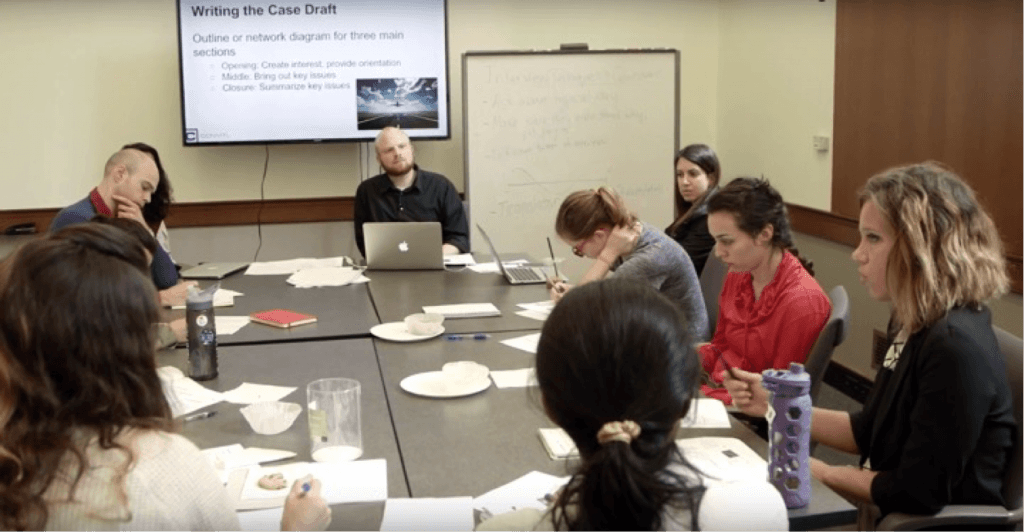Case Consortium
The Case Consortium@Columbia includes a collection of over eighty multimedia case studies covering a range of topics in fields such as journalism, public health, and sustainable development. Most case studies are historically accurate, and were written based on original research by professionals in the field. Some have been translated into Spanish. The case study collection is enhanced with resources for faculty and students who wish to learn more about teaching and learning with case studies.

The case studies are available to the public for free as open educational resources. The Case Method encourages systems thinking and prepares students for the complexity of real life decisions that they will likely face during their careers. The heart of the Case Method is the “teaching” case study, so-called because it is used to facilitate classroom discussion. Most teaching cases are “decision forcing”—that is, the narrative stops at a critical turning point or decision point.
The case study initiative aims to develop students’ analytic, decision-making, management, and leadership skills by adding case-based learning to traditional instruction. Each case requires students to put themselves in the shoes of professionals to grapple with a wide range of issues. The cases are coupled with a teaching note, and most also include an epilogue. These cases can support a variety of pedagogies, and are flexible enough for faculty to develop unique strategies to support their teaching goals. For example, components of some case studies are revealed slowly, thus simulating the actual situation and the stressful decision points that unfold with it.
This rich collection of case studies was developed at the Columbia Journalism School in 2008. The Center for Teaching and Learning (CTL) now administers the new site, launched in 2015. The CTL also supports case-based learning by providing workshops to the University community on teaching with the Case Method.